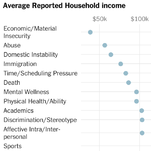How to Invest in 2025: Best Strategies for the Modern Investor
The investment landscape of 2025 presents unique opportunities and challenges that demand fresh approaches to wealth building. With technological advancement reshaping markets, geopolitical shifts influencing global economics, and demographic changes creating new investment themes, today’s investors must navigate an increasingly complex but rewarding financial environment.
This comprehensive guide explores the most effective investment strategies for 2025, helping you build a portfolio that not only preserves wealth but actively grows it in an era of rapid change. Whether you’re a seasoned investor adapting to new market realities or a beginner taking your first steps toward financial independence, understanding these modern investment principles will be crucial for your success.
The Investment Climate of 2025
The current investment environment differs dramatically from previous decades. Central bank policies have created unique market conditions, while technological disruption continues to reshape entire industries. Inflation concerns, supply chain evolution, and changing consumer behaviors all influence investment decisions in ways that require careful consideration.
Interest rates remain a critical factor shaping investment strategies. The Federal Reserve’s monetary policy directly impacts bond yields, borrowing costs, and equity valuations. Understanding these relationships helps investors position their portfolios appropriately for different rate environments.
Global interconnectedness means that events in one region quickly affect markets worldwide. Supply chain disruptions, trade relationships, and currency fluctuations create both risks and opportunities that modern investors must consider when building diversified portfolios.
1. Diversified Index Fund Investing: The Foundation Strategy
Index fund investing remains one of the most reliable paths to long-term wealth building. This passive investment approach offers broad market exposure, low fees, and consistent returns that typically outperform actively managed funds over extended periods.
The beauty of index funds lies in their simplicity and effectiveness. By purchasing shares in a fund that tracks a market index like the S&P 500, investors gain exposure to hundreds or thousands of companies with a single transaction. This instant diversification reduces risk while capturing overall market growth.
Modern index fund options extend far beyond traditional stock indices. Bond index funds provide fixed-income exposure, international index funds offer global diversification, and sector-specific indices allow targeted exposure to particular industries or themes. Real Estate Investment Trust (REIT) indices provide real estate exposure without direct property ownership.
The cost advantage of index funds cannot be overstated. With expense ratios often below 0.1%, these funds allow investors to keep more of their returns compared to actively managed alternatives that may charge 1% or more annually. Over decades, this fee difference compounds into substantial wealth preservation.
Dollar-cost averaging enhances index fund investing by reducing timing risk. Regular investments regardless of market conditions smooth out volatility and often result in better long-term returns than attempting to time the market. This systematic approach removes emotion from investment decisions while building wealth consistently.
Consider creating a core-satellite portfolio structure with index funds forming the foundation (core) while smaller allocations to specific investments (satellites) provide additional opportunities for enhanced returns or risk management.
2. Technology and Innovation Investing: Riding the Digital Wave
Technology continues to drive economic growth and create investment opportunities across multiple sectors. From artificial intelligence and cloud computing to electric vehicles and renewable energy, technological innovation creates new companies and transforms existing industries.
Artificial intelligence represents one of the most significant investment themes of our time. Companies developing AI capabilities, from semiconductor manufacturers to software developers, benefit from increasing adoption across industries. However, investors should focus on companies with sustainable competitive advantages rather than chasing every AI-related stock.
Cloud computing infrastructure continues expanding as businesses digitize operations and embrace remote work models. Major cloud providers benefit from recurring revenue models and increasing demand for digital services. Consider both the large established players and emerging companies serving specific niches.
Electric vehicle adoption accelerates globally, creating opportunities throughout the supply chain. Beyond vehicle manufacturers, consider companies producing batteries, charging infrastructure, and raw materials essential for EV production. This sector requires careful analysis as competition intensifies and government policies evolve.
Cybersecurity becomes increasingly critical as digital transformation expands attack surfaces. Companies providing security solutions benefit from growing demand and recurring revenue models. Focus on firms with proven track records and comprehensive security platforms rather than single-point solutions.
Biotechnology and healthcare innovation offer compelling long-term opportunities as aging populations drive demand for medical advances. Gene therapy, personalized medicine, and digital health solutions represent high-growth areas, though they require careful risk management due to regulatory uncertainties.
3. ESG and Sustainable Investing: Aligning Values with Returns
Environmental, Social, and Governance (ESG) investing has evolved from a niche strategy to a mainstream approach that often delivers competitive returns while supporting positive change. Modern ESG investing goes beyond simple exclusion screens to actively seek companies creating positive environmental and social impact.
Climate change creates both risks and opportunities that investors must consider. Companies addressing climate challenges through renewable energy, energy efficiency, or carbon reduction technologies often enjoy strong growth prospects and government support. Conversely, businesses heavily dependent on fossil fuels face increasing regulatory and market pressures.
Social factors increasingly influence business success and investment returns. Companies with strong employee relations, diversity initiatives, and community engagement often outperform peers over the long term. Labor shortages and changing workforce expectations make social factors more relevant than ever for business success.
Governance quality directly impacts investment outcomes. Companies with transparent management, appropriate executive compensation, and strong board oversight typically deliver better returns and avoid major scandals that destroy shareholder value. ESG analysis helps identify well-managed companies across all sectors.
ESG investment options range from broad-based ESG funds to highly focused impact investments. Investors can choose approaches that match their values while maintaining diversification and return objectives. Many ESG funds now offer performance competitive with traditional alternatives.
Impact measurement becomes increasingly sophisticated, allowing investors to track both financial returns and positive outcomes. This dual focus appeals to investors seeking meaning beyond profit while potentially accessing growing markets for sustainable solutions.
4. Real Estate Investment Strategies: Beyond Traditional Property
Real estate investment in 2025 offers multiple approaches that don’t require direct property ownership or large capital commitments. Modern real estate investing provides liquidity, diversification, and professional management while accessing various property types and geographic markets.
Real Estate Investment Trusts (REITs) offer liquid exposure to real estate markets through publicly traded securities. REITs must distribute most income to shareholders, providing steady income streams while allowing capital appreciation. Different REIT categories focus on specific property types like residential, commercial, industrial, or specialized sectors.
Real estate crowdfunding platforms democratize access to commercial real estate investments previously available only to wealthy individuals or institutions. These platforms allow smaller investments in specific properties or real estate funds, though they typically require longer holding periods and careful due diligence.
Industrial real estate benefits from e-commerce growth and supply chain evolution. Warehouses, distribution centers, and data centers experience strong demand as businesses adapt to digital commerce and cloud computing needs. Industrial REITs provide exposure to this growth trend.
Residential real estate faces complex dynamics including demographic shifts, remote work trends, and housing affordability challenges. Single-family rental properties, multifamily housing, and student housing each respond differently to these trends, requiring careful market analysis.
International real estate exposure through global REITs or real estate funds provides geographic diversification and access to different economic cycles. Emerging markets may offer higher growth potential while developed markets provide stability and income.
5. Cryptocurrency and Digital Assets: Managing High-Risk, High-Reward Opportunities
Cryptocurrency and digital assets have matured from speculative experiments to legitimate asset classes with institutional adoption and regulatory clarity. However, they remain highly volatile investments requiring careful risk management and position sizing.
Bitcoin continues serving as digital gold, providing portfolio diversification and inflation protection potential. Its limited supply and increasing institutional adoption support long-term value, though short-term volatility remains significant. Consider Bitcoin as a small portfolio allocation for risk management rather than speculation.
Ethereum enables smart contracts and decentralized applications, creating utility beyond simple currency functions. The Ethereum ecosystem supports numerous applications from decentralized finance (DeFi) to non-fungible tokens (NFTs), though competition from other blockchain platforms increases.
Stablecoins offer cryptocurrency exposure with reduced volatility by maintaining fixed exchange rates with traditional currencies. These digital assets provide utility for international transfers and accessing cryptocurrency markets while reducing price risk.
Cryptocurrency investment approaches range from direct purchases through exchanges to cryptocurrency funds and ETFs that provide professional management and regulatory compliance. Each approach offers different risk-return profiles and convenience levels.
Risk management becomes crucial in cryptocurrency investing due to extreme volatility and regulatory uncertainty. Never invest more than you can afford to lose completely, and consider cryptocurrency as a small percentage of overall portfolio allocation.
6. International and Emerging Market Exposure: Global Diversification
International investing provides exposure to different economic cycles, currencies, and growth opportunities unavailable in domestic markets. Emerging markets offer higher growth potential while developed international markets provide diversification and stability.
Developed international markets including Europe, Japan, and other established economies offer currency diversification and exposure to companies and industries less represented in US markets. These markets often trade at different valuations and respond differently to global events.
Emerging markets present higher growth potential as developing economies industrialize and their populations gain purchasing power. However, these markets also involve higher risks including political instability, currency volatility, and less developed regulatory frameworks.
Currency considerations affect international returns significantly. Currency hedged funds eliminate foreign exchange risk but also remove potential currency gains. Unhedged international investments provide full exposure to currency movements, adding both risk and opportunity.
Regional and country-specific funds allow targeted exposure to particular markets or themes. Asia-Pacific funds capture growth in the world’s most dynamic economic region, while country-specific funds enable concentrated bets on particular economies.
International bond exposure provides diversification from US interest rate cycles and access to different yield curves. Foreign government and corporate bonds offer additional income sources though they involve credit and currency risks.
7. Alternative Investments: Beyond Traditional Assets
Alternative investments provide diversification benefits and return opportunities uncorrelated with traditional stocks and bonds. These investments often require longer holding periods and higher minimum investments but can enhance portfolio performance and reduce volatility.
Commodities offer inflation protection and diversification benefits during economic uncertainty. Precious metals like gold and silver provide safe-haven assets, while agricultural and energy commodities offer exposure to supply and demand dynamics. Commodity funds and ETFs provide accessible exposure without direct ownership challenges.
Private equity investments allow participation in non-public companies’ growth and transformation. While traditionally requiring high minimum investments, newer platforms make private equity accessible to smaller investors through funds and secondary market opportunities.
Hedge funds employ sophisticated strategies to generate returns regardless of market direction. These actively managed investments use various techniques including short selling, leverage, and derivatives to pursue absolute returns though they typically charge higher fees.
Infrastructure investments benefit from long-term demographic and economic trends while providing steady income streams. Infrastructure funds invest in essential assets like utilities, transportation, and communication networks that generate predictable cash flows.
Art, collectibles, and other tangible assets provide diversification and potential appreciation while offering personal enjoyment. However, these investments require specialized knowledge, lack liquidity, and involve storage and insurance costs.
8. Tax-Advantaged Investing: Maximizing After-Tax Returns
Tax-efficient investing significantly impacts long-term wealth building by minimizing the tax drag on investment returns. Understanding and utilizing tax-advantaged accounts and strategies can add substantial value to investment portfolios over time.
Retirement accounts including 401(k)s and IRAs provide immediate tax benefits and tax-deferred growth. Traditional accounts offer current tax deductions while Roth accounts provide tax-free future withdrawals. The choice between traditional and Roth depends on current versus expected future tax rates.
Health Savings Accounts (HSAs) offer triple tax advantages including deductible contributions, tax-free growth, and tax-free withdrawals for qualified medical expenses. After age 65, HSAs function like traditional IRAs for non-medical expenses while maintaining tax-free status for medical costs.
Tax-loss harvesting involves selling losing investments to offset gains and reduce taxable income. This strategy works particularly well in taxable investment accounts and can be automated through robo-advisors that systematically harvest losses while maintaining desired asset allocation.
Asset location strategies place tax-inefficient investments in tax-advantaged accounts while holding tax-efficient investments in taxable accounts. Bonds and REITs generate ordinary income taxed at higher rates, making them ideal for tax-sheltered accounts.
Municipal bonds provide tax-free income for investors in high tax brackets. State-specific municipal bonds offer additional state tax advantages for residents of high-tax states. However, compare after-tax yields with taxable alternatives to ensure municipal bonds provide better value.
Building Your 2025 Investment Portfolio
Creating an effective investment portfolio requires balancing multiple factors including risk tolerance, time horizon, income needs, and personal preferences. The optimal portfolio varies for each individual but should incorporate several key principles for success.
Asset allocation forms the foundation of portfolio construction. The traditional 60/40 stock-bond allocation may require adjustment in current market conditions, with many advisors suggesting higher equity allocations for long-term investors and alternative investments for diversification.
Risk management involves more than just diversification. Consider correlation between investments, concentration risk, and liquidity needs when building portfolios. Stress test portfolios against various market scenarios to understand potential outcomes.
Regular rebalancing maintains desired asset allocation and forces disciplined buying low and selling high. Quarterly or annual rebalancing typically provides optimal results without excessive trading costs. Some investors prefer threshold-based rebalancing when allocations drift beyond predetermined ranges.
Cost consciousness impacts long-term returns significantly. Focus on low-cost investment options, minimize trading frequency, and understand all fees associated with investment accounts and products. Even small fee differences compound into substantial wealth impacts over decades.
Investment Platforms and Tools for 2025
Modern investment platforms provide unprecedented access to markets, research, and portfolio management tools. Choosing the right platform depends on investment style, account size, and desired features.
Robo-advisors offer automated portfolio management at low costs, making professional investment management accessible to smaller accounts. These platforms provide automatic rebalancing, tax-loss harvesting, and asset allocation based on individual goals and risk tolerance.
Traditional brokerages continue evolving to offer competitive pricing and advanced features. Many now provide commission-free stock and ETF trading while offering research tools, educational resources, and financial planning services.
Specialized platforms serve specific investment needs including cryptocurrency exchanges, real estate crowdfunding sites, and alternative investment platforms. Each platform offers unique features and investment access but may require separate accounts and management.
Research tools and resources help investors make informed decisions. Financial news services, analyst reports, and portfolio analysis tools provide valuable information for investment selection and monitoring. Many platforms include these resources as part of their service offerings.
Mobile apps enable portfolio monitoring and trading from anywhere, making investment management more convenient and responsive. However, easy access can encourage overtrading, so maintain discipline in investment decisions regardless of platform convenience.
Risk Management and Portfolio Protection
Effective risk management protects portfolios from significant losses while allowing participation in market growth. Understanding different types of risk and appropriate mitigation strategies is essential for long-term investment success.
Market risk affects all investments to some degree and cannot be eliminated through diversification. However, asset allocation across different investment types and geographic regions can reduce overall portfolio volatility and improve risk-adjusted returns.
Inflation risk erodes purchasing power over time, making it crucial to maintain exposure to assets that historically outpace inflation. Stocks, real estate, and inflation-protected securities provide better inflation protection than traditional bonds or cash.
Interest rate risk particularly affects bond investments and dividend-paying stocks. Understanding duration and how interest rate changes impact different investments helps in positioning portfolios appropriately for various rate environments.
Credit risk involves the possibility of borrowers defaulting on obligations. Diversification across different bond issuers, credit qualities, and maturities helps manage credit risk in fixed-income portfolios.
Liquidity risk occurs when investments cannot be easily sold without significant price impact. Maintaining some allocation to highly liquid investments provides flexibility for unexpected needs or investment opportunities.











